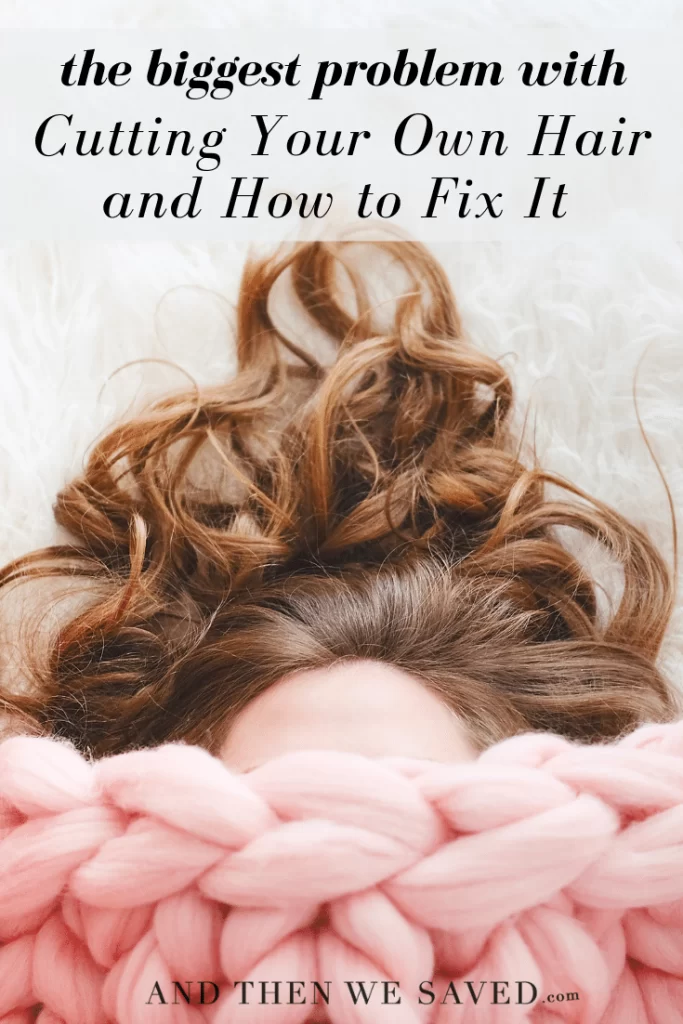Whether you cut your hair to save on the salon fee, or simply enjoy a wine-fueled DIY haircut, you can relate to the horror stories of disastrous hack jobs. The truth is, you still need a date with your stylist. However, paying up to $60 for a haircut might not be an option. If a haircut is outside your budget, then it’s time you learned a few tricks on fixing DIY haircut problems.
Cutting hair is not just about arming yourself with a pair of sharp scissors and driving them around the head. When you decide to cut your hair to a certain length, you need to take a few factors into consideration. These considerations include the shape of your face and the length of hair that you want. If you’re not careful, you’ll end up cutting one side shorter than the other, or leave patches on your head. That’d just the kind of worst case scenario I’m helping you to avoid.
If you’re an experimental person who wants to try trending hairstyles, it’s crucial that you consult with a professional hairdresser. Only they can give you solid advice on cuts that will work for you and those that won’t. Getting professional advice is the best way to access knowledge of the best trends that will work with your type. In addition to being able to cut your hair properly, a pro hair stylist will advise you on products that help your hair grow and maintain its luster. Take that knowledge home with you for regular DIY haircut maintenance. Avoid that hair walk of shame. Keep reading to discover foolproof methods of cutting your own hair.
Never Go From Long to Short
A regular haircut is necessary to freshen your tips and eliminate those unsightly split ends. You’ll also smooth and re-sculpt a style that has grown out of its shape. If you are not a pro stylist, you can dye your long hair, or relax it. However, cutting long hair is very tricky. When you pull your long hair forward to cut it short, it leaves you with either horribly short hair, or uneven ends.
A Micro-Trim Can Mean Disaster
We all know by now that trimming the barest minimum your hair’s dry ends every six weeks will keep your mane from splitting from the hair shafts and help it grow healthily. For a micro-trim to work, especially when your straight, curly or afro hair feels dry, dull, straw-like, frizzy and rough you only need to cut about a half inch to an inch, nothing more.
Cut Hair According to Face Shape
Knowing the shape of your face is essential; especially for a DIY haircut because this can help you choose a style or length that will accentuate your best facial features. You either have one of six face shapes: round, square, long or oblong, heart, diamond, or oval. For example; side-swept bangs are ideal for heart-shaped faces because they tend to draw more attention to the eyes and cheekbones. Those with a square-shaped face have strong, angular jawlines that photograph very well, you may want to play down a strong jawline with either curls and shags, or super-short edgy, or layered bob cuts.

DIY Haircut Using the Right Tools
If going to the hairdresser every six weeks is not your cup of tea, consider investing in the right hair cutting pro-level tools; because you know better than to use kitchen or office scissors on your split ends. Chopping your own hair at home would certainly save you time and money; but to achieve the exactness your hair requires you will need precision cutting, tension, elevation, and sub-sectioning tools to create exact edges that are elegant.
Cut Dry or Wet Hair?
The easiest way to get clean, precise lines is to cut your hair when it’s wet; especially for thinner, straighter hair. For thick, coarse or textured hair, cutting it dry will allow to see how it falls and give you room to touch up any uneven parts.




